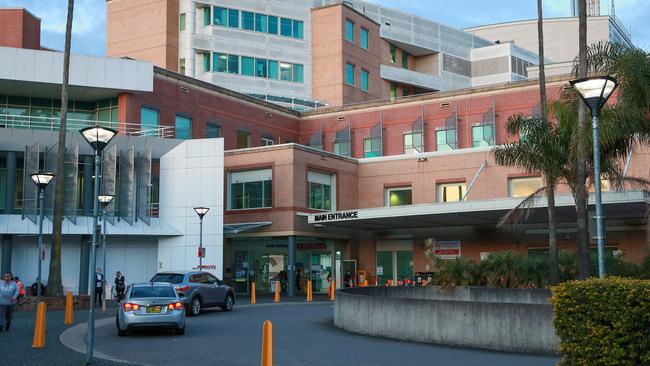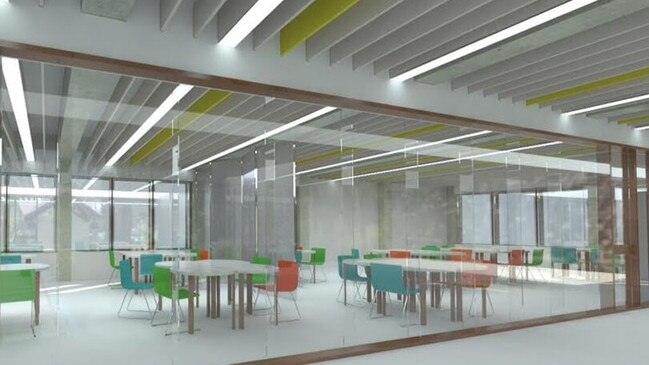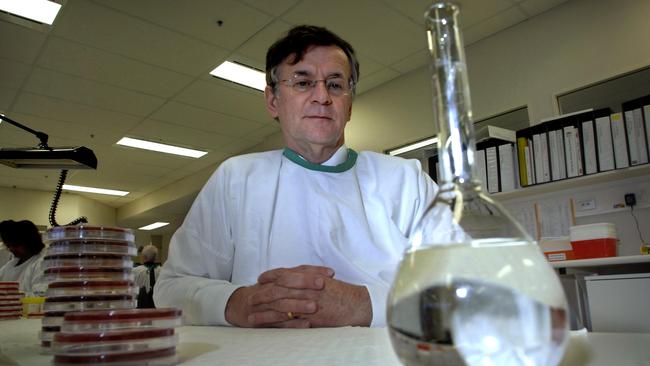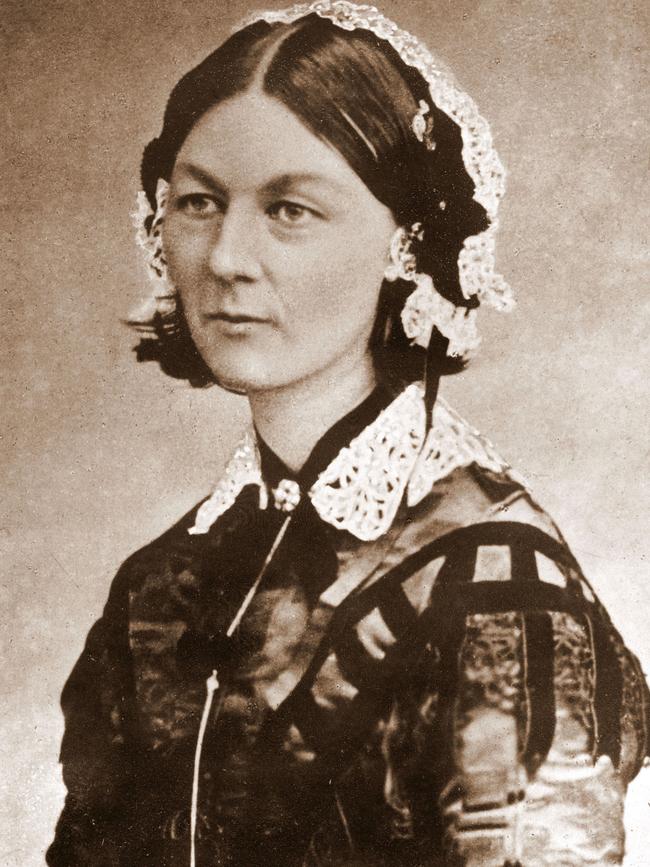COVID-19 NSW: Healthcare worker at two emergency rooms among 10 new cases
A health care professional who worked at two emergency departments while potentially infectious was among the 10 new cases of COVID-19 recorded in NSW in the 24 hours to 8pm last night.
NSW Coronavirus News
Don't miss out on the headlines from NSW Coronavirus News. Followed categories will be added to My News.
- Download our app and stay up to date anywhere, anytime
- What you get as a subscriber to The Daily Telegraph
A healthcare professional who worked at two emergency departments while potentially infectious is among NSW’s 10 new cases of COVID-19.
A Sydney school has been also been closed and another will be cleaned after three students were counted among Sunday’s new cases.
The new cases were found among 38,526 tests done across the state.
Four of the cases were detected among people in hotel quarantine and four were locally acquired and linked to known clusters.

The two remaining cases, which remain under investigation, include a man in his 40s from Northern Sydney and a child who attends Lidcombe Public School. Two other Year 7 students testing positive to the virus at Kincoppal-Rose Bay School of the Sacred Heart in Vaucluse have forced the closure of its high school today. Lidcombe Public School will also undergo cleaning today.
The case of the healthcare worker was disclosed by NSW Health on Saturday, however was included in Sunday’s statistics due to it falling outside the reporting period.
The health professional worked two shifts at Sydney emergency departments while potentially infectious — at Concord Hospital from 2pm to midnight on September 1 and Liverpool Hospital from 8am to 6pm on September 3.
Services at the hospital have not been affected.

“The health professional wore full personal protective equipment at all times while in contact with patients and a surgical mask at all other times,” NSW Health said.
The worker first reported symptoms on September 4 and was immediately tested and went into isolation.
Authorities were attempting to trace the source of the infection as well as contact all patients and medical staff who were in proximity to the health care worker.
NSW Health is also on alert after one of Sunday’s cases attended the Hyde Park Medical Centre in the Sydney CBD.
Anyone who visited the clinic from August 24 to September 5 has been advised to undergo testing and isolate if they show the slightest symptom.
Workers at the centre have been told to undergo testing and isolate until a negative result is received while NSW Health attempts to trace all close contacts.
Of the four other cases acquired locally, three are connected to the CBD cluster which now stands at 64 cases. Those three include the two Year 7 students at Kincoppal Rose Bay who returned positive tests.
The other new case is a woman in her 30s from southwest Sydney who is a contact of a previously known case.
The very large number of tests reported today were the result of a cohort of 18,956 tests being carried out on a previous date by a private laboratory but not reported to NSW Health until now.
“All the previously conducted tests had negative results and there was no impact on the timely notification of these negative results to the people who had been tested,” NSW Health’s Dr Christine Selvey said.
ROSE BAY SCHOOL TO CLOSE AFTER STUDENTS TEST POSITIVE
Rose Bay private school, Kincoppal Rose Bay, will be closed on Monday following the diagnosis of the two Year 7 students with coronavirus.
The school’s principal has confirmed that close contacts over the students are being informed over the weekend and notified that they will need to get COVID-19 tested and undertake 14 days self-isolation from the date of their last contact with the students.

All year 7 students and any staff members who have worked with year 7 at the school in the past week are also required to self-isolate until contract tracing is completed.
The school will be non-operational on Monday, to allow deep cleaning to occur and in order for contact tracing to be completed.
More information is available on the NSW Health website.
B ACK TO THE FUTURE ON HOSPITAL DESIGN TO LIMIT COVID-19
Hospitals of the future could be very different places because of COVID-19. The virus’ legacy may force future hospital designs to factor in more open spaces, far fewer shared wards and many more single rooms, windows which can open to let in fresh air and changes to airconditioning systems.
Outbreaks in hospitals, such as at Frankston Hospital in Melbourne which has seen 618 staff isolated and almost 100 staff infected, has highlighted the issue that old hospital designs may exacerbate viral spread.
New findings recently published in the Nature journal showed SARS-CoV-2, the virus that causes COVID-19 can persist in the air.
Researchers in Wuhan measured SARS-CoV-2 RNA concentrations in aerosol samples taken from 30 locations found medical staff areas, including rooms where personal protective equipment was removed, had high SARS-CoV-2 levels. Public areas with high foot traffic also had high viral RNA concentrations.
Download our app and stay up to date anywhere, anytime
What you get as a subscriber to The Daily Telegraph
The study found the virus had the potential to transmit via the air.
“Our results indicate that room ventilation, open space, sanitisation of protective apparel, and proper use and disinfection of toilet areas can effectively limit the concentration of SARS-CoV-2 RNA in aerosols,” the researchers concluded.

Infectious diseases expert Prof Peter Collignon believes the vast majority of spread is via droplets expelled by coughing and sneezing but airconditioning and heating, which lowers humidity, enables the virus to be more effective.
“All the evidence suggests indoors is more dangerous than outdoors. Low humidity from heating or cooling and airconditioning favours virus uptake in the nose, it appears to increase susceptibility,” Prof Collignon said.

“There is a design issue with hospitals, they are all completely enclosed with airconditioning and no way to open the windows to get fresh air. In a lot hospitals it is impossible.
“It is a fundamental issue — how do you get fresh air in and how do stop bad air being circulated. I’d say don’t have airconditioning, open some windows. Florence Nightingale was into fresh air and separating patients.
“I think a good hospital design would have 80 per cent single rooms with their own toilets and bathrooms, the ability to get to outdoor spaces and sunshine and fresh air without going through transit areas where there are other staff and patients. We need outdoors areas on the fifth floor in other words.”
When tuberculosis was rife, sanatoriums were designed with fresh air in mind.
“They were on one or two levels that had open access to outside world, they were a good design with fresh air, sanatoriums were all about outdoors and sunshine and it decreased the transmission to tuberculosis. Now the design is all airconditioned and little outside access of fresh air.”
Andrew Orfanos, president of the Australian Institute of Occupational Hygienists said while hospitals were designed for patients, health care workers are now at risk due to poor design of staffrooms, toilets and administration areas.
“How we supply fresh, clean air into our hospitals needs to be considered. All those staff areas, the lunch rooms, rest rooms that are small with no airflow, is where there has been no focus on ventilation and fresh air and that is where we are putting staff at risk.”
